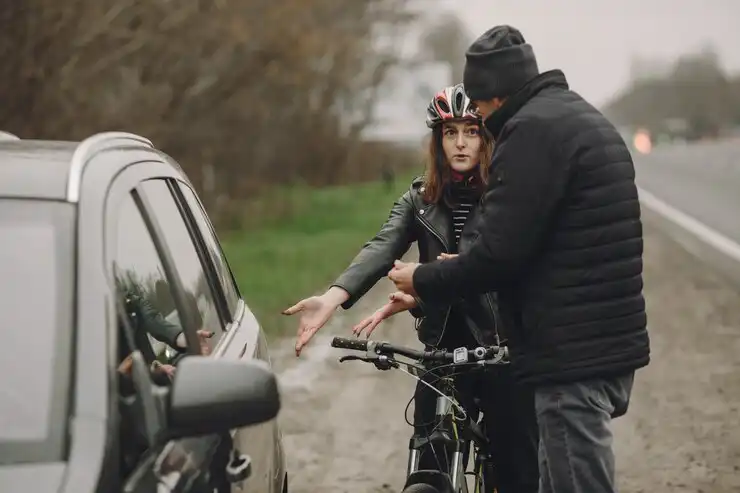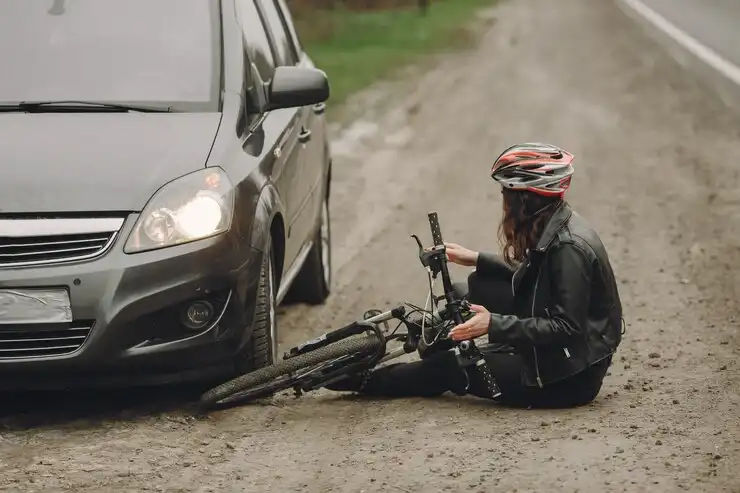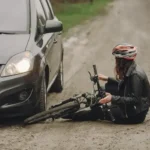Navigating through intersections is one of the most challenging and dangerous aspects of urban cycling. According to traffic safety reports, a significant percentage of bicycle accidents occur at intersections due to driver negligence, poor visibility, and unclear communication. As a cyclist, it’s crucial to stay vigilant and proactive to minimize the risk of accidents. Here’s how you can avoid bicycle accidents at intersections and protect yourself on the road. And if you ever find yourself in an accident, don’t hesitate to contact our experienced bicycle accident attorney for legal help.
1. Always Follow Traffic Signals and Rules
Obey all traffic signals and road signs, just like any other vehicle on the road. Stop at red lights and stop signs, yield when necessary, and never assume that drivers see you. Following traffic rules not only keeps you safe but also reinforces cyclists’ rights on the road.
2. Make Yourself Visible
One of the main reasons for accidents at intersections is poor visibility. To ensure that drivers see you:
- Wear bright or reflective clothing, especially at night or in low-light conditions.
- Use front and rear lights on your bicycle.
- Avoid riding in drivers’ blind spots by maintaining a safe distance from larger vehicles like buses and trucks.
3. Communicate Your Intentions Clearly
Drivers need to know where you’re going to avoid collisions. Use clear hand signals well before making turns or changing lanes:
- Left arm straight out to signal a left turn.
- Right arm straight out to signal a right turn.
- Left arm bent downward to indicate stopping or slowing down.
Making eye contact with drivers can also help ensure they’ve seen you before you cross the intersection.
4. Be Aware of Turning Vehicles
One of the most common causes of bicycle accidents at intersections is vehicles making right or left turns. To avoid this:
- Never pass a vehicle on the right at an intersection.
- Position yourself in the lane that best matches your intended direction.
- Watch for drivers who may turn suddenly without signaling.
If you’re unsure about a driver’s intentions, it’s safer to wait until the vehicle has cleared the intersection before proceeding.
5. Position Yourself Properly
Your positioning in the lane matters:
- If you’re going straight, stay in the center of the lane to avoid being squeezed by turning vehicles.
- If you’re turning left, position yourself in the left-most lane or the designated turn lane, signaling your intention clearly.
- Use bike lanes where available, but be cautious when entering or exiting intersections.
6. Slow Down and Scan for Hazards
Reduce your speed when approaching intersections and scan the area for potential hazards:
- Look out for pedestrians, other cyclists, and vehicles entering from side streets or driveways.
- Be cautious of obstacles like potholes, uneven surfaces, and debris that could cause a loss of control.
A slower speed gives you more time to react to unexpected situations.
7. Make Eye Contact and Stay Alert
Never assume that a driver has seen you. Make eye contact with drivers before crossing the intersection. Staying alert and maintaining awareness of your surroundings can help you anticipate potential risks.
8. Practice Defensive Cycling
Defensive cycling means being proactive and prepared for unexpected movements from vehicles or pedestrians. Always be ready to stop or change direction if needed. By anticipating hazards, you can react quickly and avoid accidents.
9. Use Designated Bike Lanes and Crosswalks
Where available, use designated bike lanes and crosswalks. These are designed to enhance cyclist safety, especially at busy intersections. However, always remain cautious, as not all drivers expect cyclists to be present.
10. Know What to Do If an Accident Occurs
Even the most careful cyclists can get into accidents. If an accident happens:
- Check for injuries and call for medical help if necessary.
- Gather contact and insurance information from the other party involved.
- Document the scene with photos and witness statements.
- File a police report for official documentation.
For legal protection and to ensure fair compensation, contact a bicycle accident attorney as soon as possible.
Contact Our Bicycle Accident Attorney Today
If you or a loved one has been injured in a bicycle accident at an intersection, our dedicated bicycle accident attorney is here to help you navigate the legal process. We fight for your rights and work tirelessly to secure the compensation you deserve. Contact us today for a free consultation and take the first step toward justice and recovery.




